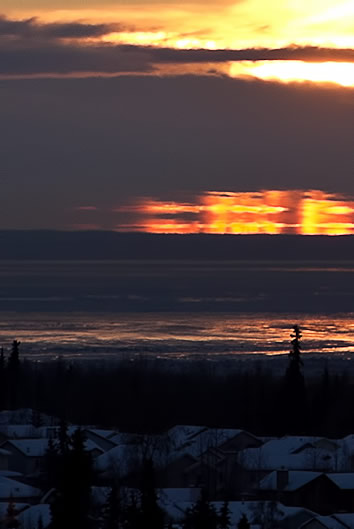 |
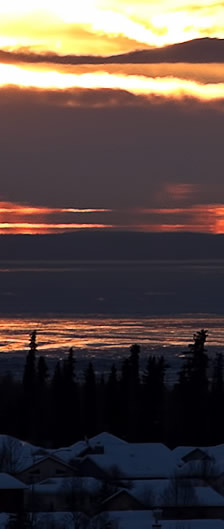 |
|
| Miraged Clouds, Alaska Imaged near Anchorage by Doug Short. ©Doug Short, shown with permission |
 |
 |
|

| About - Submit | Optics Picture of the Day | Galleries | Previous | Next | Today |

|
“I spotted this mirage one evening as the sun was setting. There are no mountains or hills in this direction. The relatively thin strip of land below the mirage is the Kenai (keen' eye') Peninsula south of Anchorage. The sun was just barely above to slightly below the horizon.” A temperature inversion with warmer air above cooler was responsible for the superior mirage, ‘superior’ because there is an inverted image above the lower ‘normal’ one. Regard the lower cloud in the ray diagram. Rays can leave the cloud top along path ‘a’ towards the eye. The ray passes through cool air of more or less constant temperature and is little deviated. The cloud top appears in the 'right' position. However, a second ray ‘b’ enters the temperature and density gradients of the inversion layer. Rays are always deviated towards the denser (cooler) air layer and ray ‘b’ curves downwards to the eye. It forms a second image of the cloud top above that seen by ray ‘a’. Rays leaving the cloud base can in the right circumstances be even more strongly refracted. Ray ‘c’ from the cloud base appears to come from high in the sky. The upper image is inverted. Well-developed superior mirages have a third erect image above the second inverted one. They can also show Fata Morgana characteristics with towering images resembling cliffs or castles in the air. Something of the sort is possibly happening here.
Watch the clouds! |
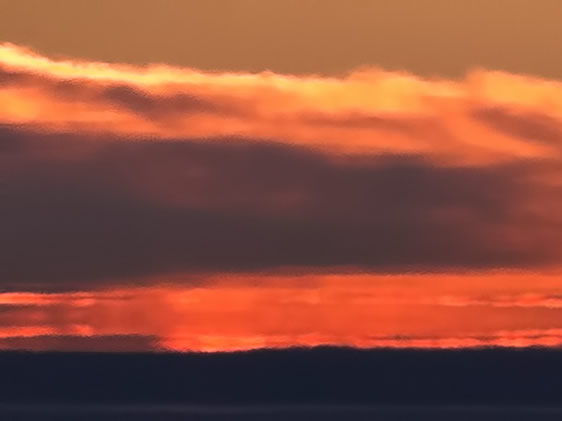 |
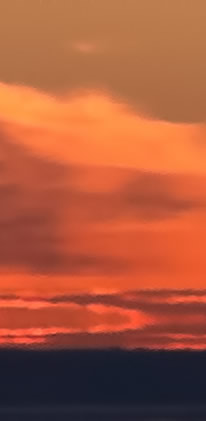 |
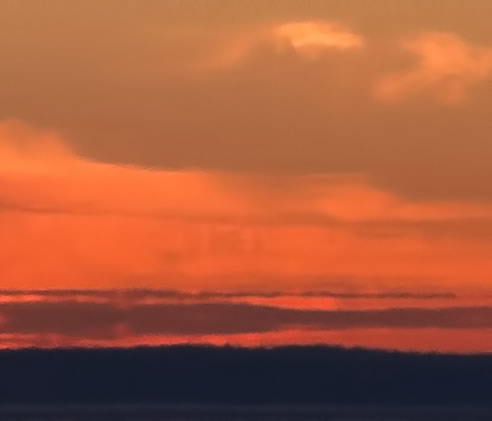 |